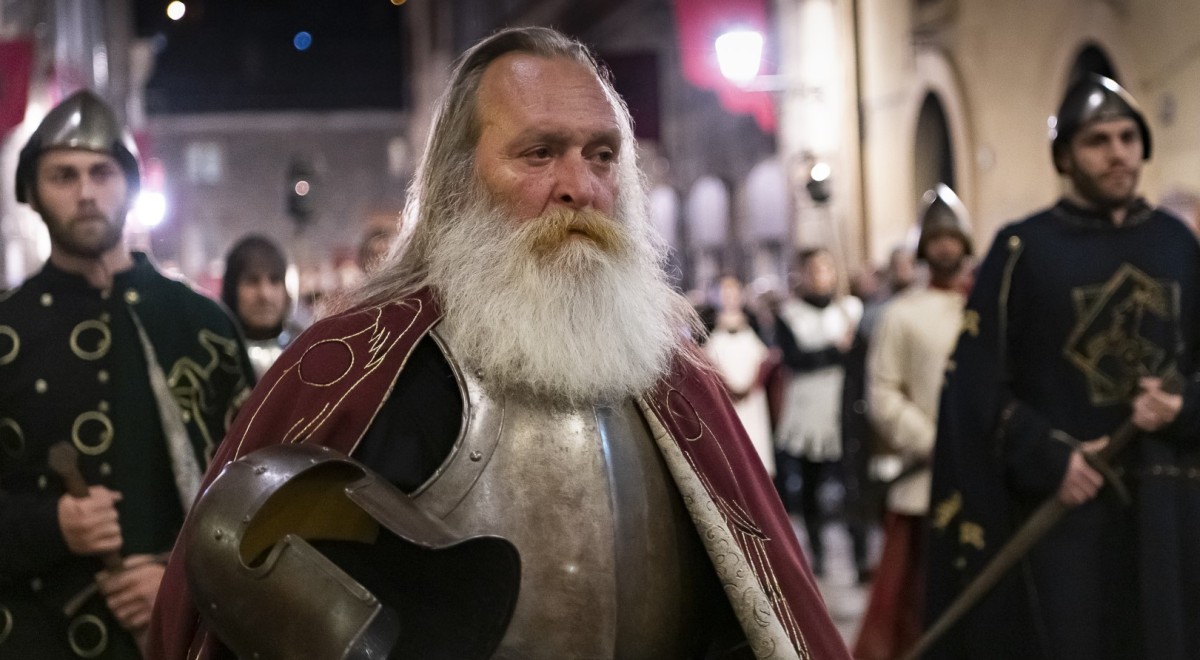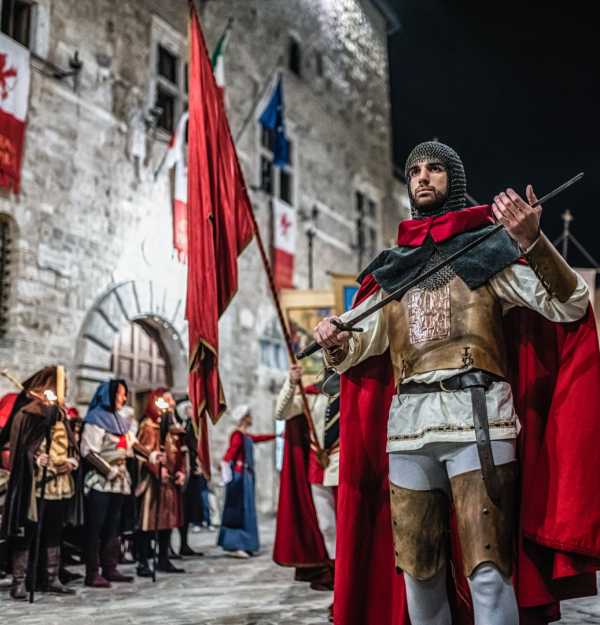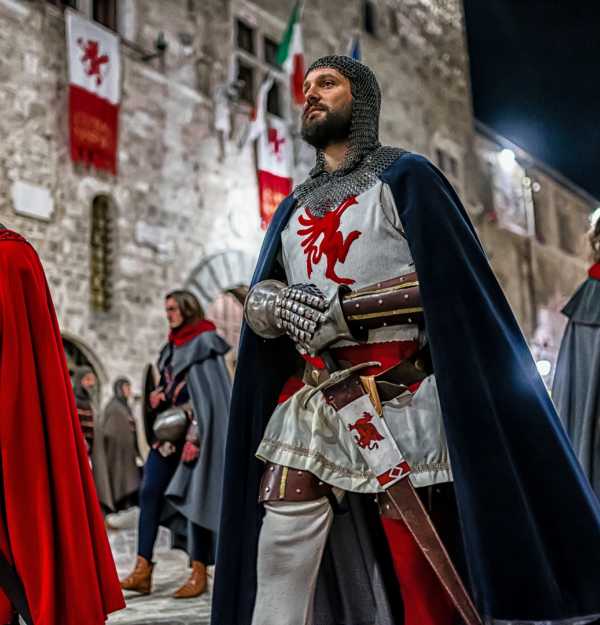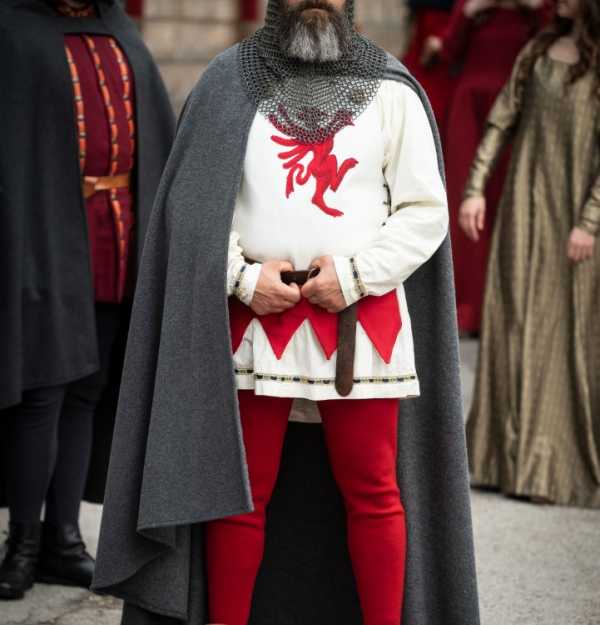
The Military Custody was entrusted, in times of war, to all the male population between 14 and 70 years, with the exception of doctors and grammatic teachers.
According to the subdivision of the Terzieri and the parishes, the men skilled in arms were enrolled in the Librorum Custodie Civitatis and could belong to three major categories: balestrariorum (crossbowmen), pavesatorum (pavesati, or fott soldiers with large shields) et cursorum (knights).
Cavalry was the force element of the army, but it was often incapable of coordinated maneuvers and showed its impotence against fortified positions.
The artisans, shopkeepers and petty bourgeois usually constituted a well-framed infantry, divided by Centurie (one hundred men) and led by their own Capocentes. He opposed the enemy cavalry, but also served as a support for the overlap. The Narnese infantry was composed of pavesatori (equipped with a pavese and armed with spears, buzzers and spies to offend) and crossbowmen, equipped with a powerful weapon and extremely precise.
In addition to the army, the "Castellani, Potestates, Sergentes et Turreri Castrorum, et Roccarum Communis", to play the role of custodians had to be well equipped of "cerbelleria, gozzeria, lancea vel balistra, cultello de perhide, vel corsetto". The military equipment assumes, next to the offensive-defensive function of its body, also a symbolic value.
The Narnese Statutes report the rules governing the ascent to the honor of "cinguli militaris". The girdle was nothing more than the girdle to which the sword was hung, noble weapon of chivalry and whoever aspired to such charge, could do so in the feast of San Giovenale. The Narnese Chamber entrusted the assets and a sum of 100 gold florins to the future "miles", for the purchase of a military tent.









